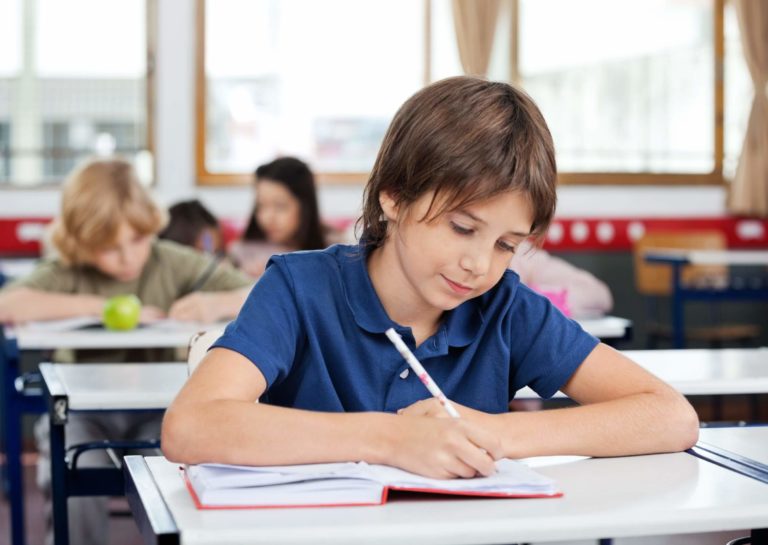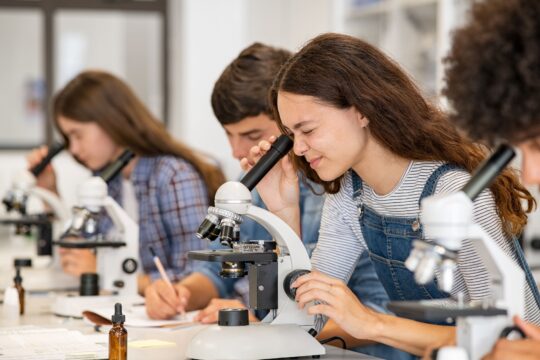As educators, we are trained to assess students, extract data, reflect, and use the aforementioned process to drive instruction. We set SMART goals, and in some states the achievement of these goals or lack thereof is embedded in our professional evaluations. The most effective teachers adopt a growth mindset, understanding that student success is measured by progress as opposed to achieving a set ideal.
This type of teaching is necessary but should not exist sans inclusion of students as stakeholders in their own education. Too often, discussions about data and growth happen in secluded teacher huddles while students engage in specials or travel home in the afternoon. Ironically, students are often excluded from this conversation where they should play the most important role. One way to help students assume this role is through teaching students to self-regulate. Teaching students self-regulation gives them a seat at the table of their education.
What is Self-Regulation?
A basic self-regulation definition is the crossroads where self-awareness and motivation meet. When students are trained to self-regulate, they are able to chart their own path toward success while also evaluating and learning from weaknesses and failures. Student self-regulation occurs in the four phases outlined below.
Set Goals and Plan Strategies
At the inception of self-regulation, students set goals and select strategies that will aid them in reaching those goals. Much like the class-wide goals that we often set as teachers, these goals should consider baseline data of the student’s performance. Once students understand and embrace where they are, they are better equipped to form a realistic vision of where they want to go. When teaching self-regulation, strategies should be based upon each student’s learning style and preferences.
Monitor Performance
Once students have a goal and implement strategies, they must continuously monitor their progress. Students must have formative, low-stakes assessments to track how they progress and the effectiveness of strategies. With a growth mindset, students are able to learn from successes and setbacks.
Reflect Upon Performance
After assessing performance, students must take time to reflect. In reflection, the student analyzes the why behind his or her performance. The student seeks to understand what contributed to the presence or lack of success and determines what changes could improve outcomes going forward.
Utilize Reflection for Planning
Self-regulation is a cyclical process. After students reflect, that reflection fuels creation of the next goal and selection of strategies.
Self-Regulation Strategies to Teach Students
While self-regulation might seem like an abstract concept, it boils down to strategies that teachers choose to implement in the classroom. Here are some strategies that will get your students on the path of self-regulation.
Learning Style Knowledge
Students are empowered when they understand how they learn best. As such, teachers should take time to have students assess their learning styles. This can be as simple as a quick learning style survey. It is important that once students identify their learning style, they are equipped with strategies and study techniques to match.
Data Journals
We must abolish the idea that data is a complex concept to be fathomed by educators only. Students can and should collect, analyze, and use their performance data. One way to do this is through data journals. In data journals, students record their performance data and take time to reflect in a specific notebook. This is a great way for students to keep track of growth. Evidence of growth is a great motivational factor.
Visual Reminders
When students are self-regulating for class-wide expectations, visual reminders are helpful. These reminders can range from behavior expectations to academic expectations. Anchor charts are useful for this. For example, having an anchor chart that expresses expectations for collaboration will help students to self-regulate during group assignments.
A Safe Learning Environment
This may seem like a given, but a safe learning environment is crucial for effective self-regulation. In order to self-regulate, students must feel comfortable making and learning from mistakes and being transparent about their areas for growth. In order for students to find this comfort, a teacher must cultivate a learning environment where students feel safe and valued.
Brain Breaks
Thankfully, brain breaks and movement are embraced in the classroom now more than ever. Students are not machines, and perhaps one of the most valuable things we can teach them is when and how to take a break. We should be building brain breaks into our lessons and also training students to know when they need a break and how they can successfully pull away from work momentarily.
Emotional Tracking
Emotional intelligence is the skill that truly sets students up for lifelong success. This is the ability to understand one’s emotions and how they impact the way you function at any given time. Aside from this understanding, an emotionally intelligent person is able to regulate and express her emotions. We can teach students to be emotionally intelligent by self-regulating their emotions. This can be as simple as a feelings chart that asks students to indicate how they feel throughout the day. Journaling and embracing social-emotional learning activities are also helpful. Let’s not forget that encouraging students to seek emotional support, such as school counselors, is a great way to support emotional health.
The Importance of Teaching Self-Regulation
Teaching children self-regulation doesn’t just contribute to a positive learning environment, but it also gives students a valuable skillset for the future. Students who can effectively self-regulate become competitive and valuable in the future workplace. Furthermore, self-regulating employees are marketable because they are self-directed and more efficient. Even when teaching our younger students, our focus should always be cultivating well-rounded, career-ready citizens. As students matriculate through our classrooms, they will develop many skills, but self-regulation is an optimal skill that, when instilled correctly, can carry them through a life of success.




